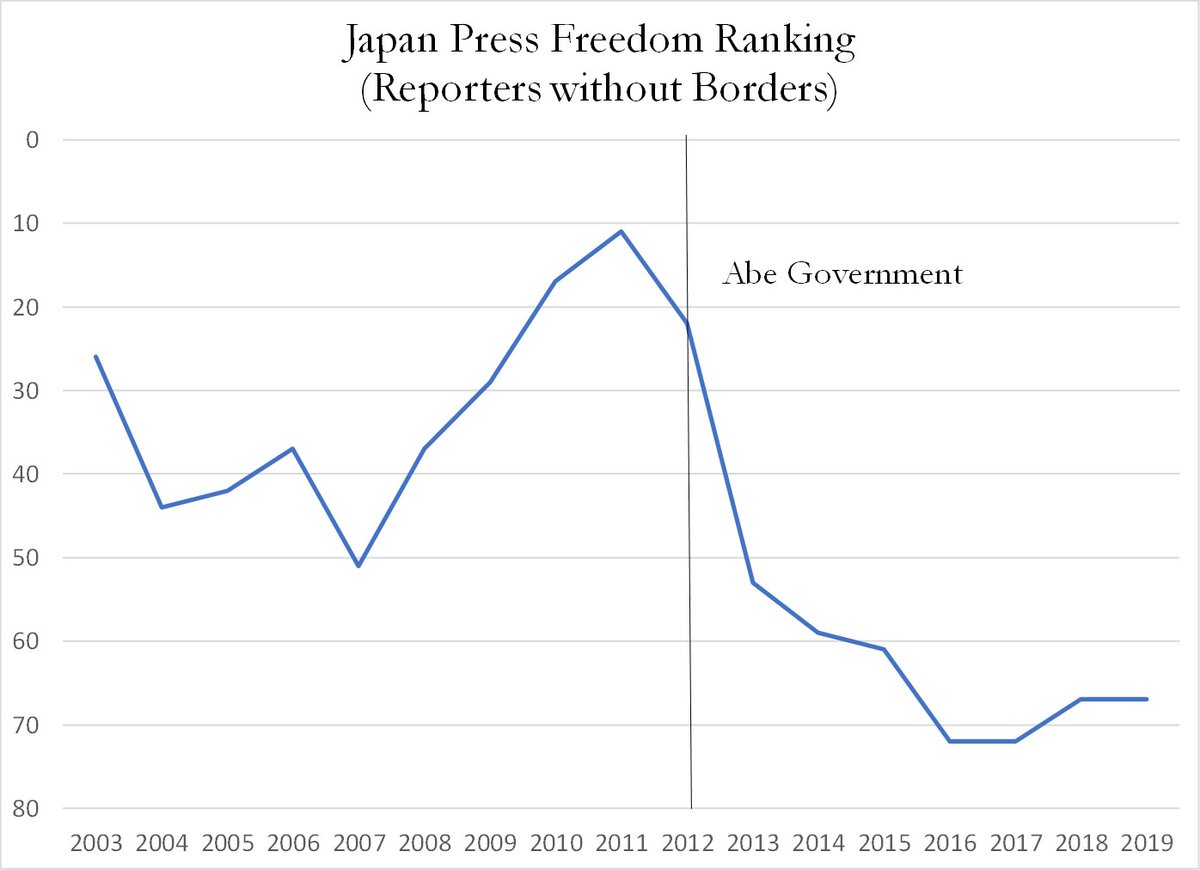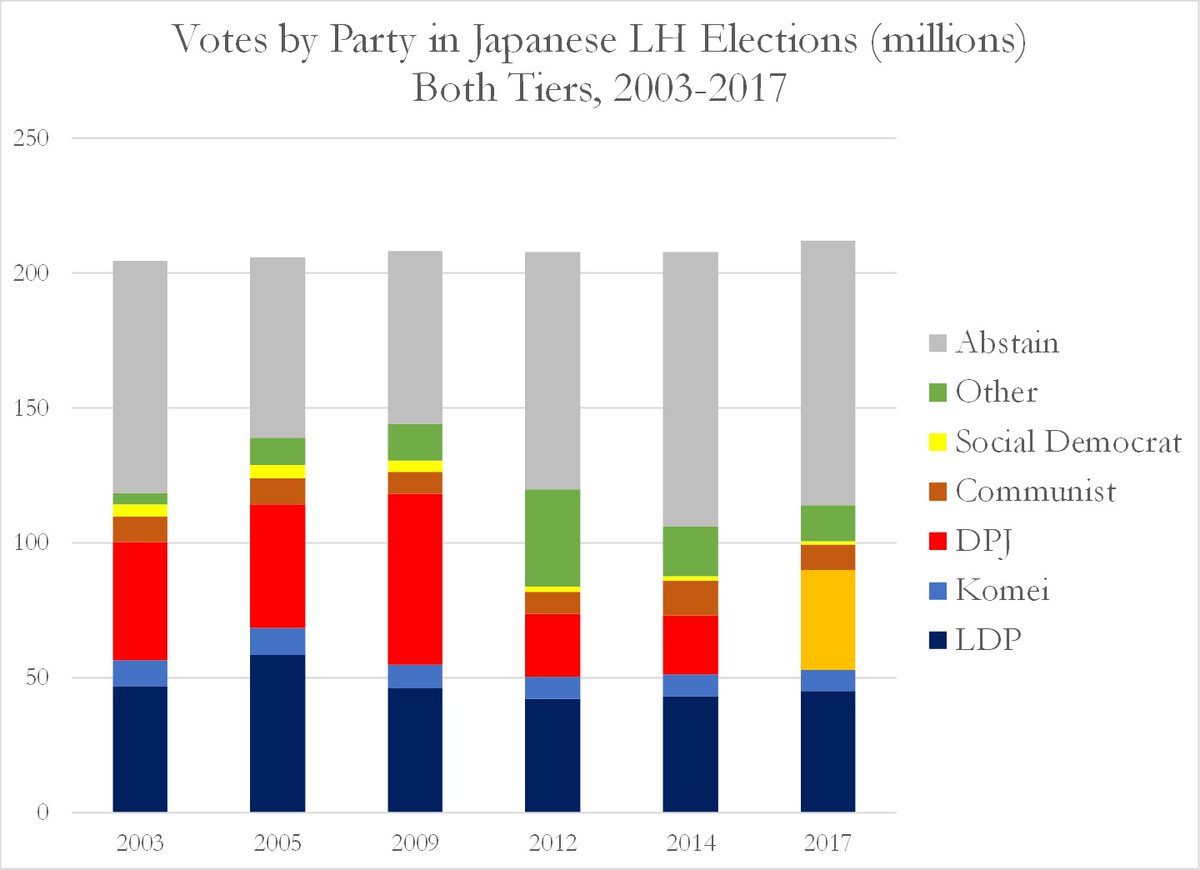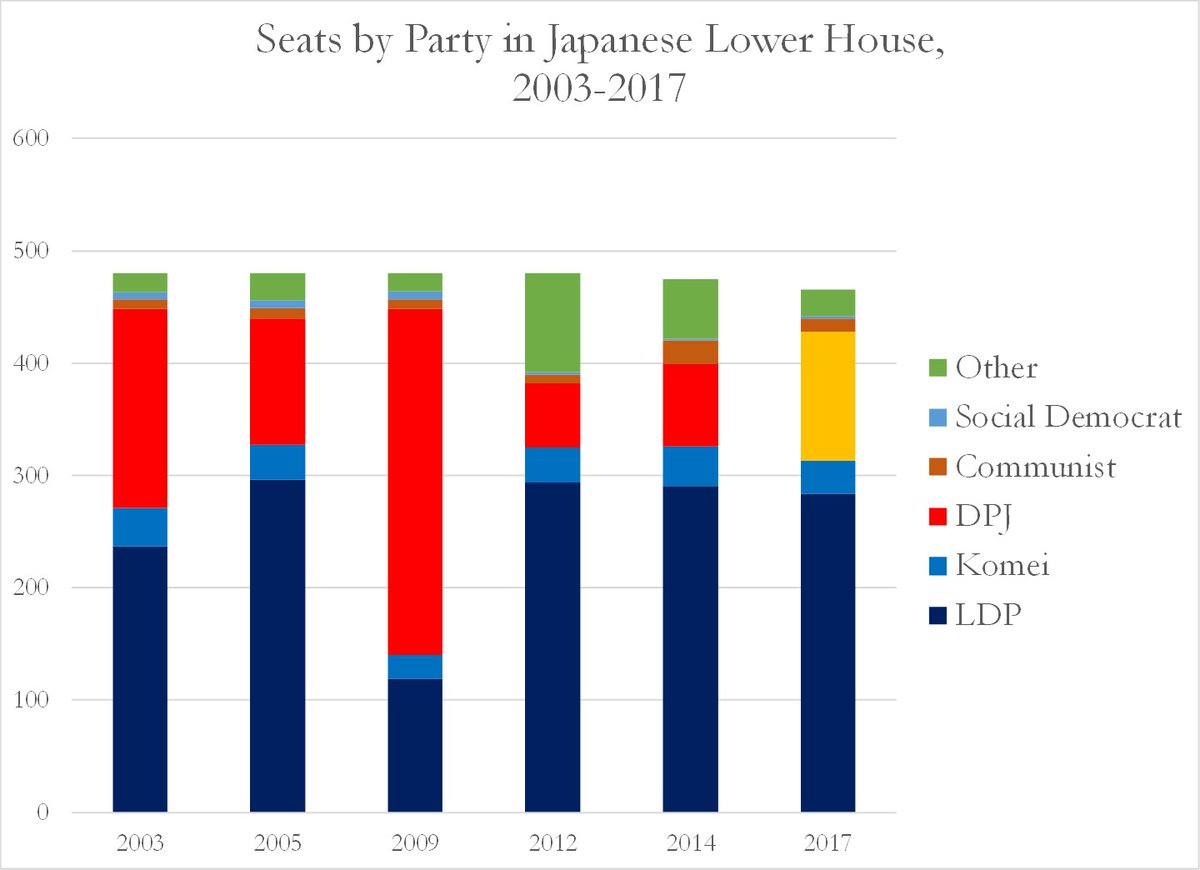Some thoughts on Prime Minister Abe’s political legacy and COVID-19 response, drawing on a forthcoming volume from @CUP_PoliSci I am co-editing with Takeo Hoshi. (1)
Abe will go down in history as the longest-serving Japanese prime minister ever. That’s quite an achievement in contemporary Japanese politics: prior to Abe, six Prime Ministers lasted only about a year each (including Abe himself in 2006-7). (2)
Abe was also a relatively popular prime minister, averaging close to 50% approval during his tenure according to NHK (though his approval suffered during the pandemic). (3) http://www.nhk.or.jp/senkyo/shijiritsu/">https://www.nhk.or.jp/senkyo/sh...
Abe’s governance strategy reflected perceived lessons from Abe’s first tenure and the Koizumi & DPJ governments. They were designed to take advantage of Japan’s current political institutions. Three components: (4)
1. Popularity management: Abe saw Abenomics as the source of his popularity, and his strategy was to pivot to Abenomics reforms whenever his popularity suffered (e.g. after passing unpopular security legislation) (5)
Abe also relied on a media strategy that sought to control the popular narrative by limiting access to the PM, managing scandals quickly to control the news cycle, and applying pressure to critical news outlets. (6)
The media strategy was particularly harmful to Japan’s international reputation, as @martfack and others have written. For example, Japan’s press freedom ranking fell from around 10th to 70th place in the world: (7)
2. Snap elections: Abe sought to maintain party discipline by calling or threatening to call snap lower house elections. This credible threat quelled internal resistance, which was a problem during previous PMs. (8)
The 2014 election was critical: the snap election quelled a potential rebellion from LDP backbenchers aligned with the Ministry of Finance that sought to prevent Abe from postponing a consumption tax hike. It was similar to Koizumi’s strategy in the 2005 postal election. (9)
3. Centralization of authority: Abe accelerated previous administrative reforms by concentrating more authority in the Kantei at the expense of bureaucrats and back benchers in the LDP. (10)
While Abe and his inner circle saw these lessons learned as critical ingredients for his success, he also probably benefited from a fair bit of good luck, like absence of major crises. Critically, opposition parties have been in disarray. (11)
Here is a figure showing how Japanese voted in lower house elections. The LDP won landslides with around two thirds of seats in 2012, 14, and 17. However, they received fewer total votes than their devastating loss in 2009. The main story was opposition collapse. (12)
Opposition collapse and splintering meant the LDP had a huge advantage in single member districts that translated into big Diet majorities. This gave Abe’s threat to call elections credibility, stabilizing his rule. (13)
I would also argue that the characteristics of Abe’s governance strategy contributed to the government’s struggles during the COVID-19 pandemic. (14)
The strategy of pivoting to Abenomics when the PM’s popularity declined worked well in normal times, but it was counterproductive during the pandemic. The “Go To” campaign to boost the economy by encouraging domestic travel is a good example. (15) https://www.japantimes.co.jp/news/2020/07/22/national/japan-go-to-travel-campaign-criticism-coronavirus/">https://www.japantimes.co.jp/news/2020...
The media management strategy relied on limiting & controlling media access to the PM. But not appearing in front of the media frequently ended up making Abe seem aloof and distracted during a major public health crisis. (16)
Although Abe exercised strong authority with the bureaucracy & backbenchers, local governments in Japan retain considerable autonomy. And COVID-19 response put local governments at the frontlines of the response for testing, business closures, etc. (17) https://www.japantimes.co.jp/news/2020/04/11/national/politics-diplomacy/shinzo-abe-yuriko-koike-tokyo-shutdown-coronavirus/">https://www.japantimes.co.jp/news/2020...
I’ll write another thread about the policy legacy of Abe. On the political side, Abe demonstrated a credible governance model that could be replicated by future Japanese prime ministers. That& #39;s a significant legacy (18)
However, the model has inherent shortcomings, such as the restrictions it places on press freedom. The concentration of power could be abused by a future leader with more authoritarian tendencies. The COVID-19 crisis has also highlighted additional problems. (19/end)

 Read on Twitter
Read on Twitter




